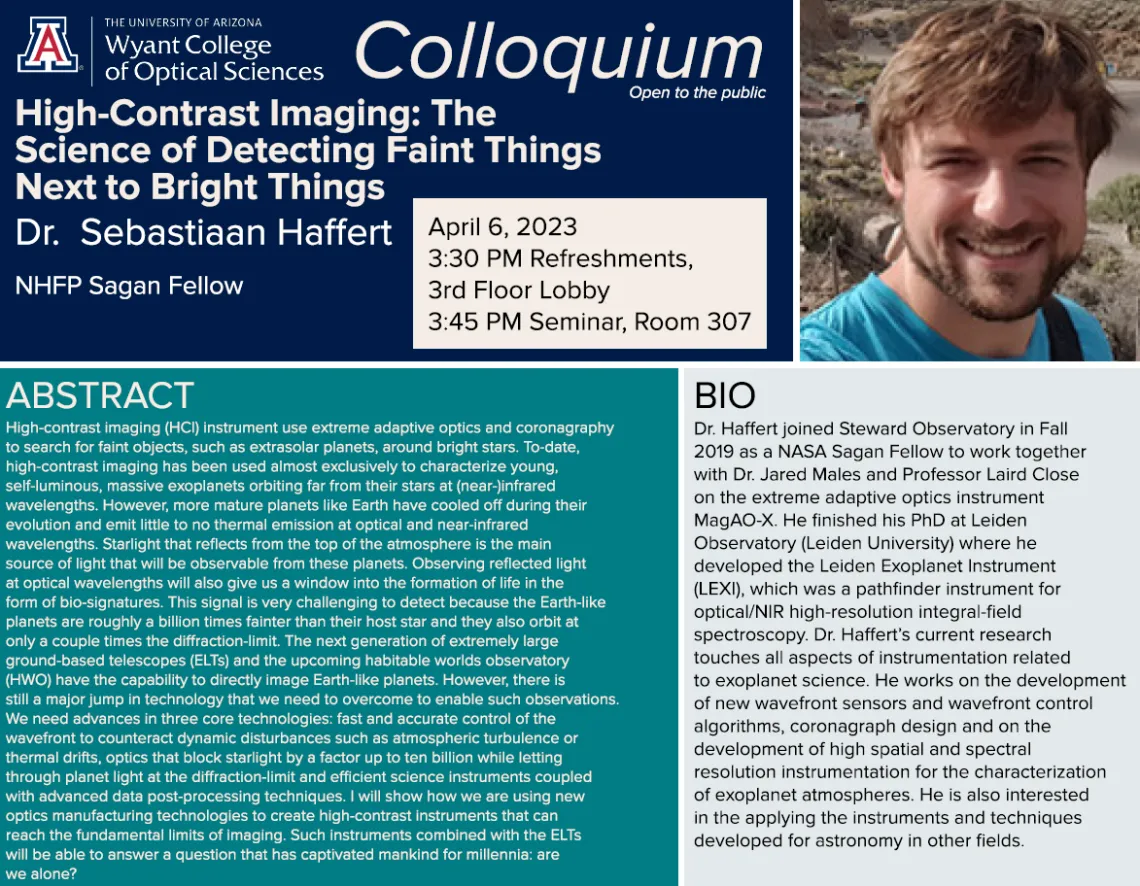
When
Where
Title: High-contrast imaging: the science of detecting faint things next to bright things.
Abstract: High-contrast imaging (HCI) instrument use extreme adaptive optics and coronagraphy to search for faint objects, such as extrasolar planets, around bright stars. To-date, high-contrast imaging has been used almost exclusively to characterize young, self-luminous, massive exoplanets orbiting far from their stars at (near-)infrared wavelengths. However, more mature planets like Earth have cooled off during their evolution and emit little to no thermal emission at optical and near-infrared wavelengths. Starlight that reflects from the top of the atmosphere is the main source of light that will be observable from these planets. Observing reflected light at optical wavelengths will also give us a window into the formation of life in the form of bio-signatures. This signal is very challenging to detect because the Earth-like planets are roughly a billion times fainter than their host star and they also orbit at only a couple times the diffraction-limit. The next generation of extremely large ground-based telescopes (ELTs) and the upcoming habitable worlds observatory (HWO) have the capability to directly image Earth-like planets. However, there is still a major jump in technology that we need to overcome to enable such observations. We need advances in three core technologies: fast and accurate control of the wavefront to counteract dynamic disturbances such as atmospheric turbulence or thermal drifts, optics that block starlight by a factor up to ten billion while letting through planet light at the diffraction-limit and efficient science instruments coupled with advanced data post-processing techniques. I will show how we are using new optics manufacturing technologies to create high-contrast instruments that can reach the fundamental limits of imaging. Such instruments combined with the ELTs will be able to answer a question that has captivated mankind for millennia: are we alone?
Bio: Dr. Haffert joined Steward Observatory in Fall 2019 as a NASA Sagan Fellow to work together with Dr. Jared Males and Professor Laird Close on the extreme adaptive optics instrument MagAO-X. He finished his PhD at Leiden Observatory (Leiden University) where he developed the Leiden Exoplanet Instrument (LEXI), which was a pathfinder instrument for optical/NIR high-resolution integral-field spectroscopy. Dr. Haffert’s current research touches all aspects of instrumentation related to exoplanet science. He works on the development of new wavefront sensors and wavefront control algorithms, coronagraph design and on the development of high spatial and spectral resolution instrumentation for the characterization of exoplanet atmospheres. He is also interested in the applying the instruments and techniques developed for astronomy in other fields.
Visit our website for future lecture dates and speaker information
For a list of our archived lectures
